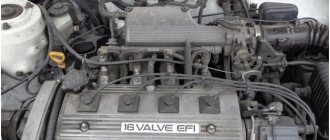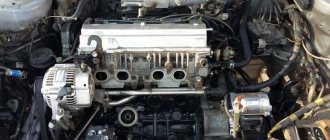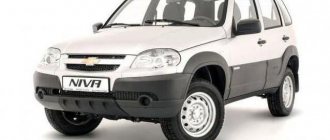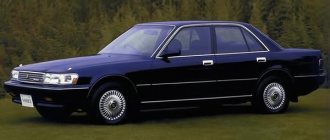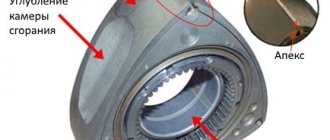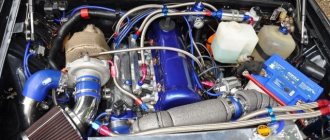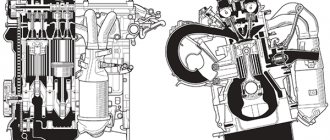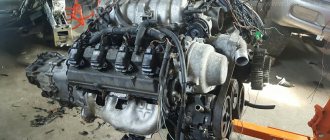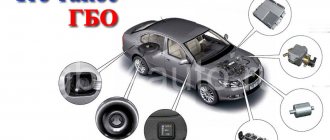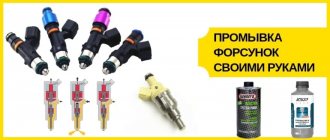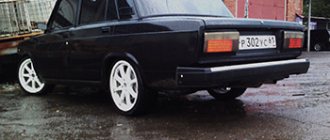Toyota has created a new power unit based on the 4A-FE. Unlike the main model, the 7a engine has a larger combustion chamber (1.8 instead of 1.6 liters) and torque with different characteristics. This parameter reaches its maximum value when the engine crankshaft rotates at a speed of 2800 rpm. Thanks to its unique characteristics, fuel is significantly saved, efficiency increases, and the car quickly picks up speed. Drivers appreciated the advantages of the Toyota 7A engine when driving in difficult conditions of city streets with traffic jams and frequent stops at traffic lights.
Description
The 7A and the 7K engine should not be confused. These power units have no related relationship. ICE 7K was produced from 1983 to 1998 and had 8 valves. Historically, the K series began its existence in 1966, and the A series in the 70s. Unlike the 7K, the A series engine was developed as a separate development direction for 16 valve engines.
The 7 A engine was a continuation of the refinement of the 1600 cc 4A-FE engine and its modifications. The engine volume increased to 1800 cm3, power and torque increased, reaching 110 hp. and 156Nm respectively. The 7A FE engine was produced at the main production of Toyota Corporation from 1993 to 2002. “A” series power units are still produced at some enterprises using licensing agreements.
Structurally, the power unit is made according to an in-line petrol four with two overhead camshafts; accordingly, the camshafts control the operation of 16 valves. The fuel system is electronically controlled injection and distributor ignition distribution. Timing belt drive. If the belt breaks, the valves do not bend. The block head is made similar to the block head of the 4A series engines.
There are no official options for refinement and development of the power unit. Supplied with a single number-letter index 7A-FE to complete various cars up to 2002. The successor to the 1800 cc drive appeared in 1998 and had the index 1ZZ.
Toyota 3S-FE
3S-FE in class “D/D+”
The honor of opening the list falls to the Toyta 3S-FE engine - a representative of the well-deserved S series, which is considered one of its most reliable and unpretentious units. A two-liter volume, four cylinders and sixteen valves are typical figures for mass-produced engines of the 90s. Camshaft drive by belt, simple distributed injection. The engine was produced from 1986 to 2000.
Power ranged from 128 to 140 hp. More powerful versions of this engine, 3S-GE and turbocharged 3S-GTE, inherited a successful design and a good service life. The 3S-FE engine was installed on a number of Toyota models: Toyota Camry (1987-1991), Toyota Celica T200, Toyota Carina (1987-1998), Toyota Corona T170 / T190, Toyota Avensis (1997-2000), Toyota RAV4 (1994- 2000), Toyota Picnic (1996-2002), Toyota MR2, and the turbocharged 3S-GTE also on Toyota Caldina, Toyota Altezza.
Mechanics note the amazing ability of this engine to withstand high loads and poor service, the ease of its repair and the overall thoughtfulness of the design. With good maintenance, such engines can cover a mileage of 500 thousand kilometers without major overhauls and with a good reserve for the future. And they know how not to bother the owners with minor problems.
The 3S-FE engine is considered one of the most reliable and durable among gasoline fours. For power units of the 90s, it was quite ordinary: four cylinders, sixteen valves and a 2-liter volume. Camshaft drive by belt, simple distributed injection. The engine was produced from 1986 to 2000.
Power varied from 128 to 140 “horses”. The 3S-FE engine was installed on a number of popular Toyota models, including: Toyota Camry, Toyota Celica, Toyota MR2, Toyota Carina, Toyota Corona, Toyota Avensis, Toyota RAV4, and even Toyota Lite/TownACE Noah. More powerful versions of this engine, such as 3S-GE and turbocharged 3S-GTE, installed on Toyota Caldina, Toyota Altezza, inherited the successful design and good service life of their progenitor.
A distinctive feature of the 3S-FE engine is good maintainability, the ability to withstand high loads and, in general, thoughtful design. With good and timely maintenance, engines can easily run 500,000 kilometers without major repairs. And there will still be a margin of safety.
1G-FE in class "E".
The 1G-FE engine belongs to the family of in-line 24-valve six-cylinder internal combustion engines with a belt drive on a single camshaft. The second camshaft is driven from the first through a special gear (“TwinCam with a narrow cylinder head”).
The 1G-FE BEAMS engine is built according to a similar design, but has a more complex design and cylinder head filling, as well as a new cylinder-piston group and crankshaft. Among the electronic devices in the internal combustion engine, there is an automatic variable valve timing system VVT-i, an electronically controlled throttle valve ETCS, non-contact electronic ignition DIS-6 and an intake manifold geometry control system ACIS. The Toyota 1G-FE engine was installed on most rear-wheel drive cars of the E class and on some models of the E+ class.
A list of these cars indicating their modifications is given below:
- Mark 2 GX81/GX70G/GX90/GX100;
- Chaser GX81/GX90/GX100;
- Cresta GX81/GX90/GX100;
- Crown GS130/131/136;
- Crown/Crown MAJESTA GS141/GS151;
- Soarer GZ20;
- Supra GA70
More or less reliably, we can only talk about “lifetime before overhaul,” when a mass-produced engine, like A or S, will require the first serious intervention in the mechanical part (not counting the replacement of the timing belt). For most engines, the bulkhead occurs during the third hundred kilometers (about 200-250 thousand km). As a rule, this intervention consists of replacing worn or stuck piston rings, and at the same time oil seals, that is, it is a bulkhead and not a major overhaul (the geometry of the cylinders and the hone on the walls of the cylinder block are usually preserved).
Andrey Goncharov, expert in the “Car Repair” section
Design improvements
The engine received a block with an increased vertical dimension, a modified crankshaft, a cylinder head, and the piston stroke increased while maintaining the same diameter.
The unique design of the 7A engine is the use of a two-layer metal head gasket and a double-case crankcase. The upper part of the crankcase, made of aluminum alloy, was attached to the block and gearbox housing.
The lower part of the crankcase was made of steel sheet, and made it possible to dismantle it without removing the engine during maintenance. The 7A motor has improved pistons. There are 8 holes in the oil scraper ring groove for draining oil into the crankcase.
The upper part of the cylinder block in terms of fasteners is made similar to the 4A-FE internal combustion engine, which allows the use of a cylinder head from a smaller engine. On the other hand, the cylinder heads are not exactly identical, since on the 7 A series the intake valve diameters have been changed from 30.0 to 31.0 mm, while the exhaust valve diameter remains unchanged.
At the same time, other camshafts provide a larger opening of the intake and exhaust valves of 7.6 mm versus 6.6 mm on the 1600 cc engine.
Changes were made to the design of the exhaust manifold to accommodate the WU-TWC converter.
Since 1993, the fuel injection system on the engine has changed. Instead of simultaneous injection into all cylinders, they began to use pairwise injection. Changes have been made to the settings of the gas distribution mechanism. The opening phase of the exhaust valves and the closing phase of the intake and exhaust valves have been changed. This made it possible to increase power and reduce fuel consumption.
Until 1993, the engines used a cold injector starting system, which was used on the 4A series, but then, after the cooling system was improved, this scheme was abandoned. The engine control unit remains the same, with the exception of two additional options: the ability to perform a system operation test and knock control, which were added to the ECM for the 1800 cc engine.
Engine tuning Toyota 5A-F/FE/FHE
Chip tuning. Atmo. Turbo
Exactly like with the atmospheric version, the engine will not show anything supernatural. The only thing that makes sense is to bore the cylinders to a diameter of 81 mm, for a 4A-FE piston, thereby we will get a working volume of 1.6 liters and, in fact, a 4A-FE engine, but there is a risk of running into casting defects. You can install a direct-flow exhaust with a 4-2-1 spider, but this will not give anything serious.
Turbine on 5A-FE
Initially, this engine was designed for maximum quiet movement, no sport was envisaged, so any serious tuning will entail replacing all the standard junk with tuning equipment, and this applies most appropriately to the turbine. The most reasonable option possible is to order a kit for 4A-FE on a small turbine and install it on a standard piston, having previously installed 360cc injectors, a Walbro 255 pump and a direct-flow exhaust on the 51st pipe, we set it up on Abita. This will give up to 140-150 hp, the resource will be greatly reduced. If you want a resource, change the crankshaft, shpg, cut the cylinder head... or swap 4A-GE)).
In 1987, the Japanese auto giant Toyota began producing a new series of engines for passenger cars, which was called “5A”. Production of the series continued until 1999. The Toyota 5A engine was produced in three modifications: 5A-F, 5A-FE, 5A-FHE.
The new 5A-FE engine had a gas distribution mechanism that provided 4 valves per cylinder, according to the DOHC design, that is, an engine equipped with two camshafts in a Double OverHead Camshaft, where each camshaft drives its own bank of valves. With this arrangement, one camshaft drives two intake valves, the other drives two exhaust valves. The valves are usually driven by pushers. The DOHC circuit in Toyota 5A series engines has made it possible to significantly increase their power.
Technical characteristics and reliability
The 7A-FE had different characteristics. The motor had 4 versions. A 115 hp engine was produced as a basic configuration. and 149 Nm of torque. The most powerful version of the internal combustion engine was produced for the Russian and Indonesian markets.
She had 120 hp. and 157 Nm. for the American market, a “squeezed” version was also produced, which produced only 110 hp, but with torque increased to 156 Nm. The weakest version of the engine produced 105 hp, the same as the 1.6 liter engine.
Some engines are designated 7a fe leanburn or 7A-FE LB. This means that the engine is equipped with a lean combustion system, which first appeared on Toyota engines in 1984 and was hidden under the abbreviation T-LCS.
LinBen technology made it possible to reduce fuel consumption by 3-4% when driving around the city and a little more than 10% when driving on the highway. But this same system reduced the maximum power and torque, so the assessment of the effectiveness of this design modification is twofold.
Engines equipped with LB were installed in Toyota Carina, Caldina, Corona and Avensis. Corolla cars have never been equipped with engines with such a fuel saving system.
In general, the power unit is quite reliable and easy to use. The service life before the first major overhaul exceeds 300,000 km. During operation, it is necessary to pay attention to electronic devices servicing the engines.
The overall picture is spoiled by the LinBurn system, which is very picky about the quality of gasoline and has an increased operating cost - for example, it requires spark plugs with platinum inserts.
Toyota 7A-FE engine maintenance
It is necessary to change the oil along with the oil filter every 10 thousand kilometers, but it is better to reduce this period by half. Choose viscosity taking into account the climatic characteristics of the region in which the operation takes place. More often, SAE 5w-30 or 5w-40 grease is used for 7A-FE. When buying oil to replace, you can safely limit yourself to a 4-liter canister. You will need about 3.5 liters of liquid, the rest will be used for topping up.
It is recommended to use original Toyota oil SAE 5w-30 or 5w-40
The 7A-FE timing system is driven by a belt. The manufacturer claims that its resource is 100 thousand km, but in practice it is better to change the part 20 thousand earlier.
Hydraulic compensators are not provided on the Toyota 7A-FE, so adjustment of the thermal valve clearances is necessary every hundred thousand mileage.
Timing belt 7A-FE
Replacing the air filter is necessary every 40 thousand, at the same mileage the fuel filter is changed. As practice has shown, both filters must be checked from time to time and, under unfavorable operating conditions, the frequency of their replacement must be reduced.
Basic faults
The main engine malfunctions are related to the functioning of the ignition system. The distributor spark supply system involves wear of the distributor bearings and gearing. As wear accumulates, the timing of the spark may shift, which leads to either a misfire or loss of power.
High-voltage wires are very demanding on cleanliness. The presence of contamination causes spark breakdown along the outer part of the wire, which also leads to engine tripping. Another cause of tripping is worn or dirty spark plugs.
Moreover, the operation of the system is affected by soot formed when using watered or iron-sulfur fuel, and external contamination of the surfaces of the spark plugs, which leads to a breakdown on the cylinder head housing.
The malfunction is eliminated by replacing the spark plugs and high-voltage wires included.
Engines equipped with the LeanBurn system freeze at around 3000 rpm as a malfunction. The malfunction occurs because there is no spark in one of the cylinders. Usually caused by wear of platinum wires.
With a new high-voltage kit, the fuel system may need to be cleaned to remove contaminants and restore injector function. If this does not help, then the fault can be found in the ECM, which may require flashing or replacement.
Engine knocking is caused by the operation of valves that require periodic adjustment. (At least 90,000 km). The piston pins in 7A engines are press-fitted, so additional knocking from this engine element is extremely rare.
Increased oil consumption is designed into the design. The technical passport of the 7A FE engine indicates the possibility of natural consumption in operation of up to 1 liter of engine oil per 1000 km.
What cars was this engine installed on?
The installation of the base 7A-FE engine was carried out on C-class cars. The test tests were successful, and the owners also left a lot of good reviews, so the Japanese automaker began installing this power unit on the following Toyota models:
| Model | Body type | Production period | Consumption market |
| Avensis | AT211 | 1997–2000 | European |
| Caldina | AT191 | 1996–1997 | Japanese |
| Caldina | AT211 | 1997–2001 | Japanese |
| Carina | AT191 | 1994–1996 | Japanese |
| Carina | AT211 | 1996–2001 | Japanese |
| Carina E | AT191 | 1994–1997 | Europe |
| Celica | AT200 | 1993–1999 | Excluding Japanese market |
| Corolla/Conquest | AE92 | September 1993 - 1998 | South Africa |
| Corolla | AE93 | 1990–1992 | Australian market only |
| Corolla | AE102/103 | 1992–1998 | Excluding Japanese market |
| Corolla/Prizm | AE102 | 1993–1997 | North America |
| Corolla | AE111 | 1997–2000 | South Africa |
| Corolla | AE112/115 | 1997–2002 | Excluding Japanese market |
| Corolla Spacio | AE115 | 1997–2001 | Japanese |
| Corona | AT191 | 1994–1997 | Excluding Japanese market |
| Corona Premium | AT211 | 1996–2001 | Japanese |
| Sprinter Carib | AE115 | 1995–2001 | Japanese |
Maintenance and technical fluids
The manufacturer specifies gasoline with an octane number of at least 92 as the recommended fuel. The technological difference in determining the octane number according to Japanese standards and GOST requirements should be taken into account. It is possible to use unleaded 95 fuel.
Engine oil is selected by viscosity in accordance with the operating mode of the vehicle and the climatic characteristics of the operating region. Synthetic oil with viscosity SAE 5W50 most fully covers all possible conditions, however, for everyday average use, oil with viscosity 5W30 or 5W40 is sufficient.
For a more precise definition, please refer to the instruction manual. Oil system capacity 3.7 liters. When replacing with a filter change, up to 300 ml of lubricant may remain on the walls of the internal channels of the engine.
It is recommended to carry out engine maintenance every 10,000 km. For heavily loaded operation, or use of the vehicle in mountainous areas, as well as for more than 50 engine starts at temperatures below −15C, it is recommended to reduce the maintenance period by half.
The air filter is changed according to condition, but at least every 30,000 km. The timing belt requires replacement, regardless of its condition, every 90,000 km.
N.B. When undergoing maintenance, it may be necessary to verify the engine series. The engine number must be located on a platform located at the rear of the engine under the exhaust manifold at the level of the generator. Access to this area is possible using a mirror.
Maintenance schedule 5E FE 1.5 l/93 – 110 l. With.
Toyota 1g fe engine: characteristics, malfunctions and tuning
Traditionally, for any power drive, the 5E FE engine is equipped with parts and assemblies with different service life. The maintenance schedule is as follows:
- Changing the engine oil is necessary every 15,000 miles, at the same time a new oil filter is installed;
- The coolant resource is limited to 50,000 km, then it needs to be replaced;
- the fuel filter must be replaced after 40,000 miles, and the air filter cartridge is updated annually;
- It is recommended to change the timing belt simultaneously with the coolant pump every 50,000 km;
- spark plugs serve in the DIS-2 ignition system for a maximum of 15,000 km or 1 year;
- The battery life is determined by the manufacturer depending on the operating conditions and battery design;
- crankcase ventilation is usually cleaned after 20 - 30 thousand km;
- Mileage 50 - 70 thousand becomes critical for the exhaust manifold; it can burn out during this time.
Replacing the timing belt 5E FE
